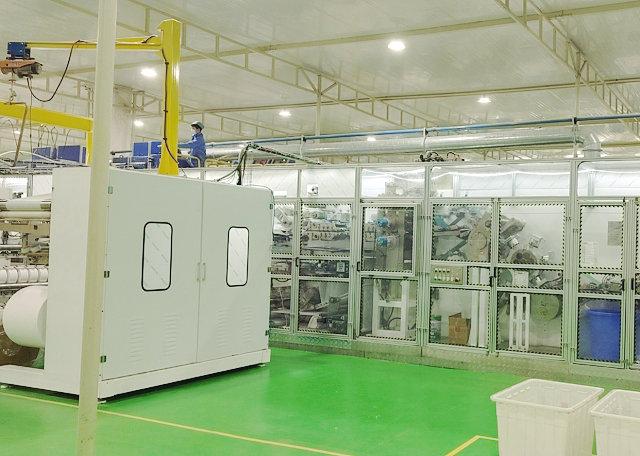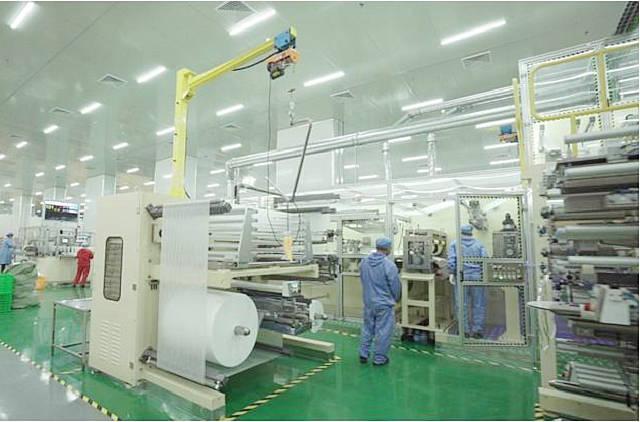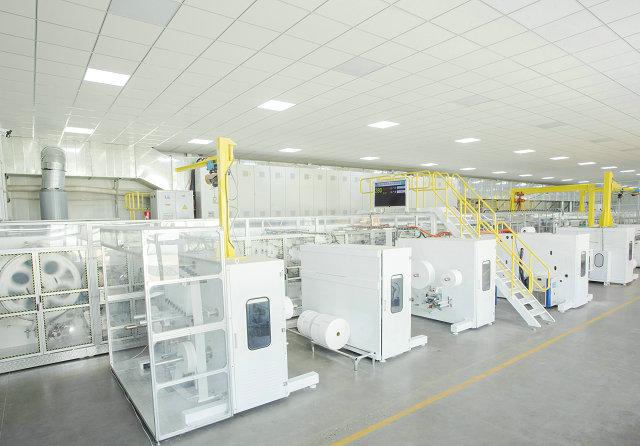Author:Haina Machinery Factory FROM:Diaper Machinery Manufacturer TIME:2024-11-14
Installing a sanitary pad machine is an essential process for businesses looking to produce sanitary products efficiently and safely. This machine not only aids in the production of pads but also contributes to meeting the growing demand for feminine hygiene products across the globe. In this article, we will walk you through the steps involved in installing a sanitary pad machine, ensuring that you understand each stage of the process and are prepared for any challenges that may arise.
Before diving into the installation process, it is crucial to understand what a sanitary pad machine is and how it operates. These machines are designed to convert raw materials, such as non-woven fabric, absorbent core, and back sheet, into finished sanitary pads. The manufacturing process involves several key stages, including material feeding, shaping, cutting, and packaging. Familiarizing yourself with these functions will give you insights into the installation requirements and operational considerations.
The first step in the installation process is preparing the site where the machine will be located. Choose a space that is clean, well-lit, and has adequate ventilation. Ensure that the floor can support the weight of the machine and that there is enough room for operators to work safely. Additionally, consider the proximity to power sources and water supplies, as these are vital for the operation of the machine.

Before starting the installation, gather all necessary tools and equipment. Commonly required tools include wrenches, screwdrivers, pliers, levelers, and measuring tapes. You may also need safety gear such as gloves and goggles to protect yourself during installation. Having everything on hand will make the process smoother and more efficient.

Once your site is prepared and tools are gathered, carefully unpack the sanitary pad machine. Inspect all components for damage during shipping. It is essential to verify that all parts listed in the manual are present. If any components are missing or damaged, contact the supplier immediately to resolve the issue before proceeding with installation.
Follow the manufacturer’s instructions to assemble the machine correctly. Typically, assembly involves attaching various parts, including the frame, rollers, and cutting mechanisms. Take your time during this stage, as incorrect assembly can lead to operational issues later on. Use a leveler to ensure that the machine is perfectly aligned, which is critical for optimal performance.
After assembly, the next step is connecting the machine to electrical and water supplies. Ensure that you follow local electrical codes and regulations. It may be best to hire a licensed electrician to handle this part of the installation. For water connections, verify that the supply meets the machine's specifications. Proper connections will help prevent operational failures and ensure safety.
Once everything is connected, it is time to test the machine. Start by running a short cycle without any raw materials to check for any mechanical issues. Listen for unusual noises and watch for any irregular movements. If everything appears to function correctly, proceed to run a test batch with raw materials. This step is critical to ensure that the machine produces pads that meet quality standards.

With the machine installed and tested, the next step is training the operators who will run the machine. Training should cover machine operation, safety protocols, and maintenance procedures. Proper training ensures that operators can efficiently manage the machine and respond to any issues that may arise during production.
To keep the sanitary pad machine functioning optimally, establish a regular maintenance schedule. This includes cleaning, lubricating moving parts, and replacing worn components. Encourage operators to report any irregularities immediately. A proactive approach to maintenance can prevent costly downtimes and extend the machine's lifespan.
Installing a sanitary pad machine involves several critical steps, from preparation and assembly to testing and operator training. By following this guide, you can streamline the installation process and ensure your machine operates efficiently. Remember that regular maintenance and proper training are essential for long-term success in producing high-quality sanitary products. With the right setup, your business can effectively contribute to the growing market for feminine hygiene products while maintaining high operational standards.
